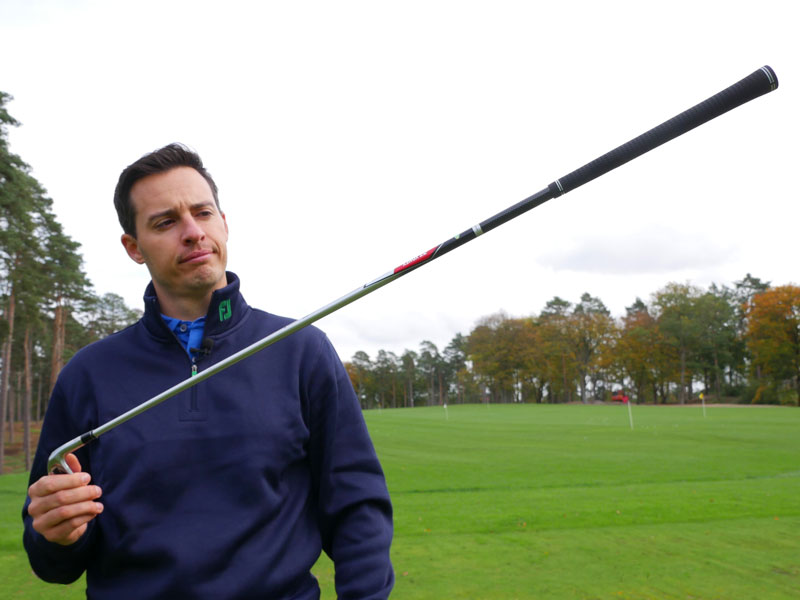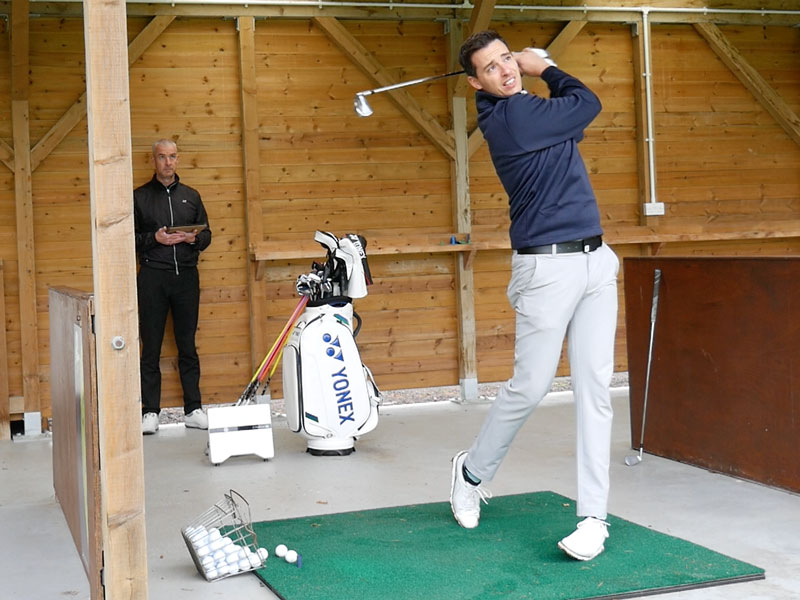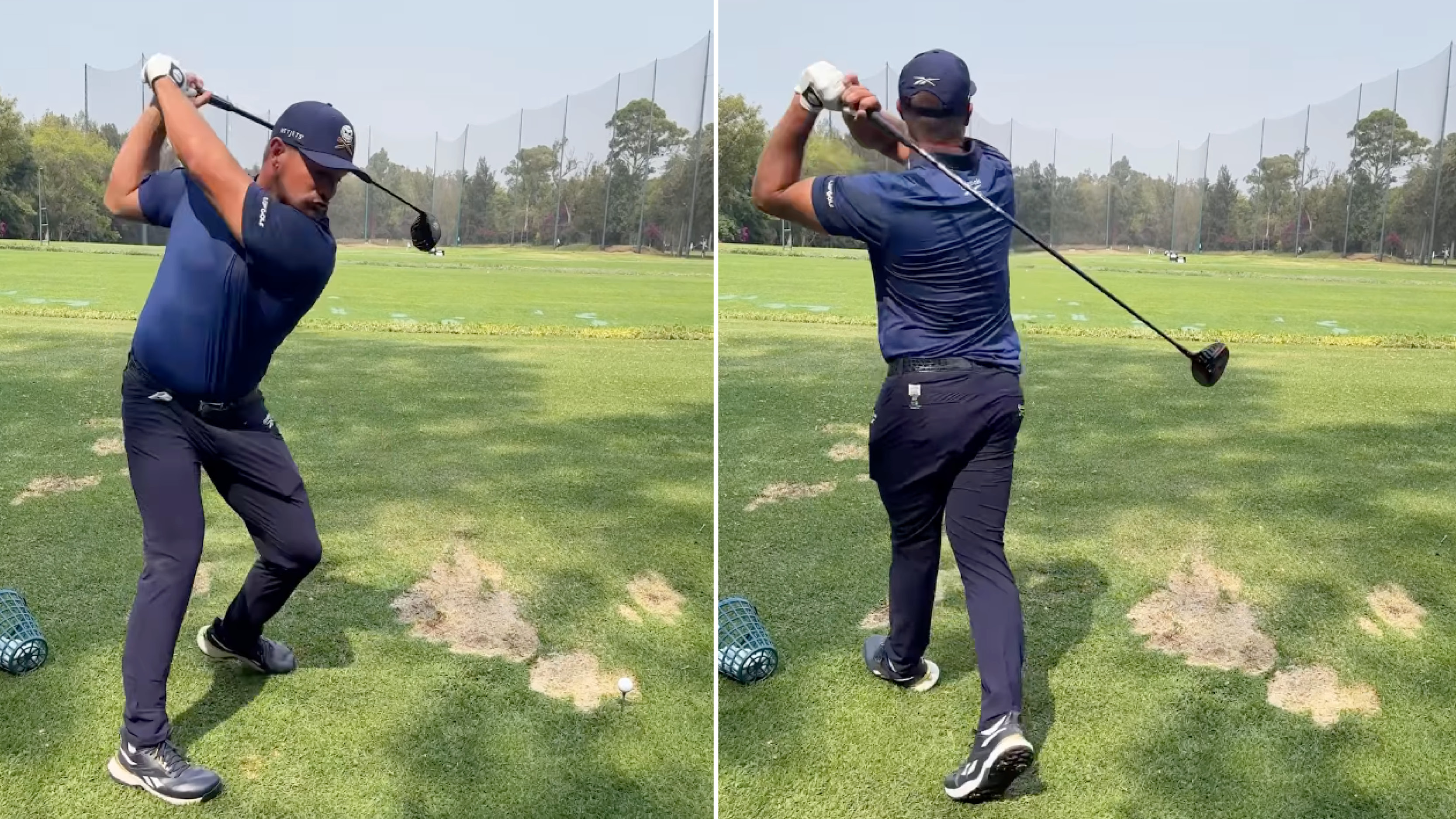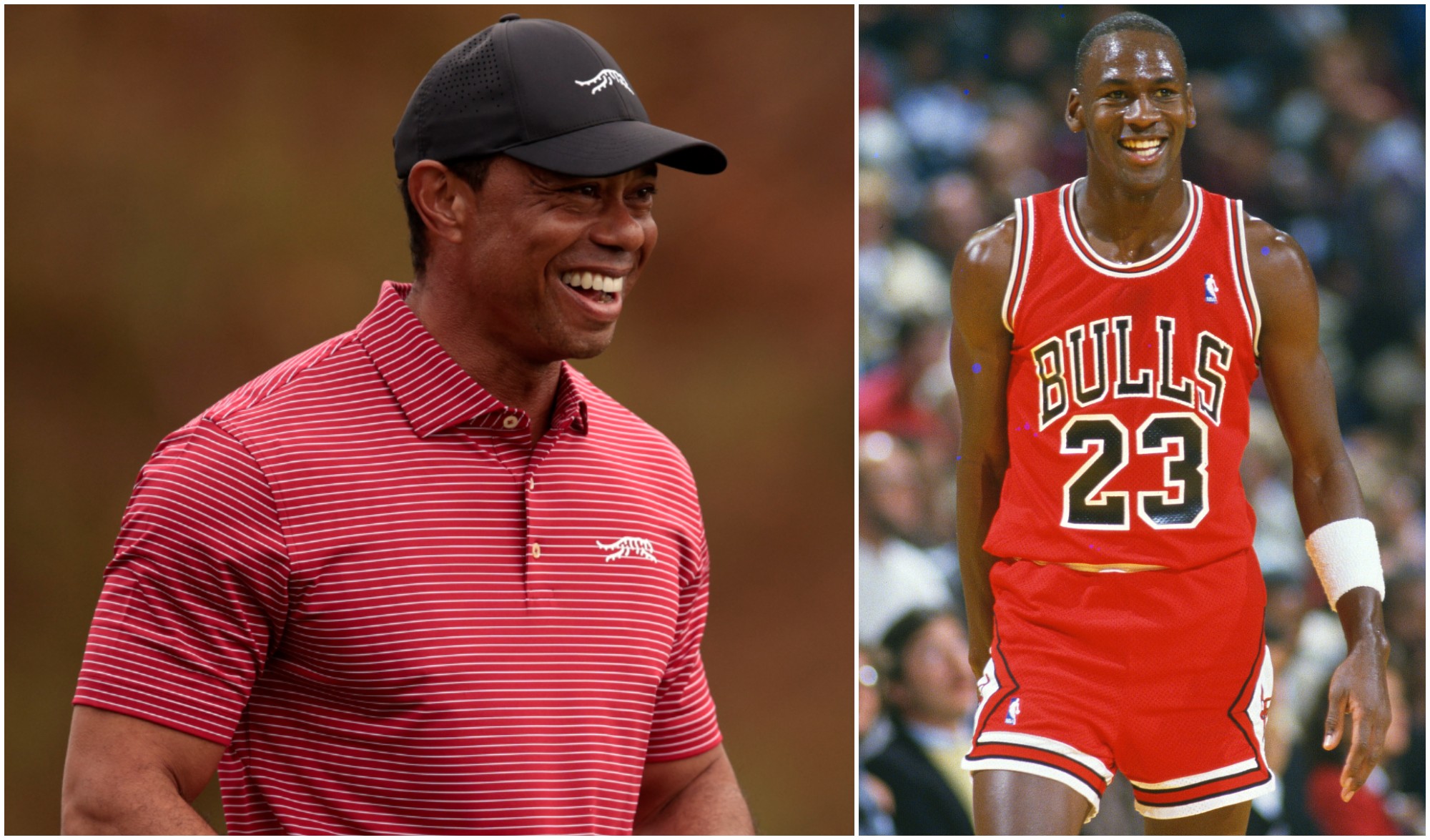Can A 5 Handicap Golfer Use Graphite Shafts?
Can a 5-handicap golfer make the switch from steel to graphite iron shafts?


Can A 5 Handicap Golfer Use Graphite Shafts? Joel Tadman finds out if he could or should make a switch from steel to graphite shafts in his irons.
Can A 5 Handicap Golfer Use Graphite Shafts?
Graphite shafts in irons have long been considered an option almost exclusively for senior and lady golfers, but is there more to them than you might think?
I met up with Darren Burgess from Yonex to try its new Ezone Forged irons in steel and graphite shafts to find out what the differences were and decide if the performance could be beneficial to my game.

After testing the 501 CB model in a stiff Nippon Modus3 NS Pro Tour 120 steel shaft, I then hit shots with the same head using a Yonex 44g NST 400 graphite shaft in SR (stiff regular) flex on Darren's Flightscope launch monitor.
You instantly notice the lighter pick up of the graphite shaft – it naturally makes the head feel heavier - which is unsurprising given it is around 80 grams lighter.
I approached the first swing with trepidation but was surprised to see the shot fly straight towards to target, albeit on a much higher flight!
Get the Golf Monthly Newsletter
Subscribe to the Golf Monthly newsletter to stay up to date with all the latest tour news, equipment news, reviews, head-to-heads and buyer’s guides from our team of experienced experts.
Comparing the numbers from steel to graphite, it was interesting to see that my clubhead speed increased significantly with the graphite shaft by over 3mph, which resulted in 2mph more ball speed, possibly because the strikes weren’t as consistent.
The graphite shaft launched the ball over 2.5° higher and it came off with around 900 rpm more spin. Factor in the five-yard higher flight, and the graphite shaft was producing carries of 173 yards, four yards longer than the steel equivalent.

So I was getting more club and ball speed as well as distance, but at the cost of trajectory. The higher flight with more spin would struggle to penetrate a head wind, although the steeper angle of descent would stop quicker on firmer greens.
What was interesting for me was that the graphite shaft seemed just as easy to control in terms of direction and I was able to flight the ball down if I wanted to. The low torque design felt far from whippy and the reduced weight meant the strain on the body was much less – I felt like I could hit balls on the range for hours.
In summary, I probably wouldn’t decide to switch into this particular graphite model, but with a greater array of weights and flex profiles to choose from, I could certainly see me finding a model that could keep the flight and spin down while remaining relatively lightweight compared to steel.
The other drawback is the price. The Yonex steel shaft I tested comes in at £50 more expensive per club in graphite, which is significant. My gains weren't overly large but there will be other types of golfer that would see even bigger gains than me. Any low launch, low spin player for example, or even slower swing speeds or force-limited players that need help to maximize club speed, could well see a larger jump in distance as well as the reduced physical strain.
So when getting fitted for your next set of irons, don’t discount graphite shafts. Give them a try alongside a steel equivalent to find out if the performance justifies the added investment.

Joel has worked in the golf industry for over 15 years covering both instruction and more recently equipment. He now oversees all equipment and video content at Golf Monthly, managing a team of talented and passionate writers and presenters in delivering the most thorough and accurate reviews, buying advice, comparisons and deals to help the reader or viewer find exactly what they are looking for.
One of his career highlights came when covering the 2012 Masters he got to play the sacred Augusta National course on the Monday after the tournament concluded, shooting a respectable 86 with just one par and four birdies. To date, his best ever round of golf is a 5-under 67 back in 2011. He currently plays his golf at Burghley Park Golf Club in Stamford, Lincs, with a handicap index of 3.1.
Joel's current What's In The Bag?
Driver: Titleist GT3, 9°, Fujikura Ventus Black 6 S shaft.
Fairway wood: Titleist TSR3, 15°
Hybrid: Titleist TSi2, 18°
Irons: Titleist T150, 4-PW
Wedges: Titleist Vokey SM10, 50°, 54° and 58°
Putter: LAB Golf DF3
Ball: 2025 Titleist Pro V1x
-
 Watch Bryson DeChambeau Smash 400+ Yard Monster Drive In LIV Golf Mexico Practice
Watch Bryson DeChambeau Smash 400+ Yard Monster Drive In LIV Golf Mexico PracticeDeChambeau is hitting mega drives this week in the 7,800ft altitude setting of Golf Club de Chapultepec in Mexico City
By Elliott Heath
-
 Tiger Woods Heads 8 Golfers To Make All Time Rich List Of Top 50 Highest Paid Athletes
Tiger Woods Heads 8 Golfers To Make All Time Rich List Of Top 50 Highest Paid AthletesTiger Woods is the second highest paid athlete of all time behind only Michael Jordan in a new top 50 rich list from Sportico
By Paul Higham